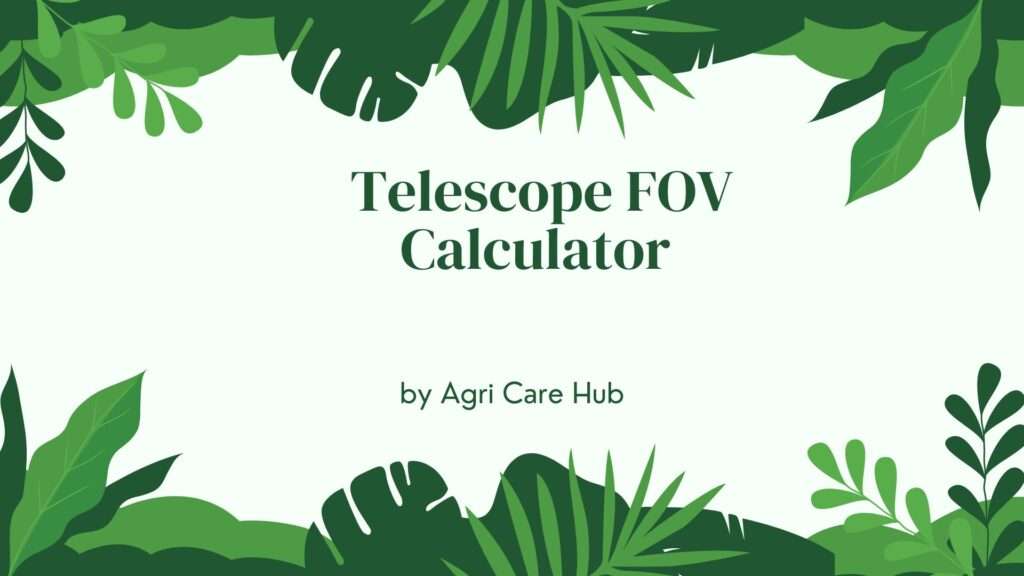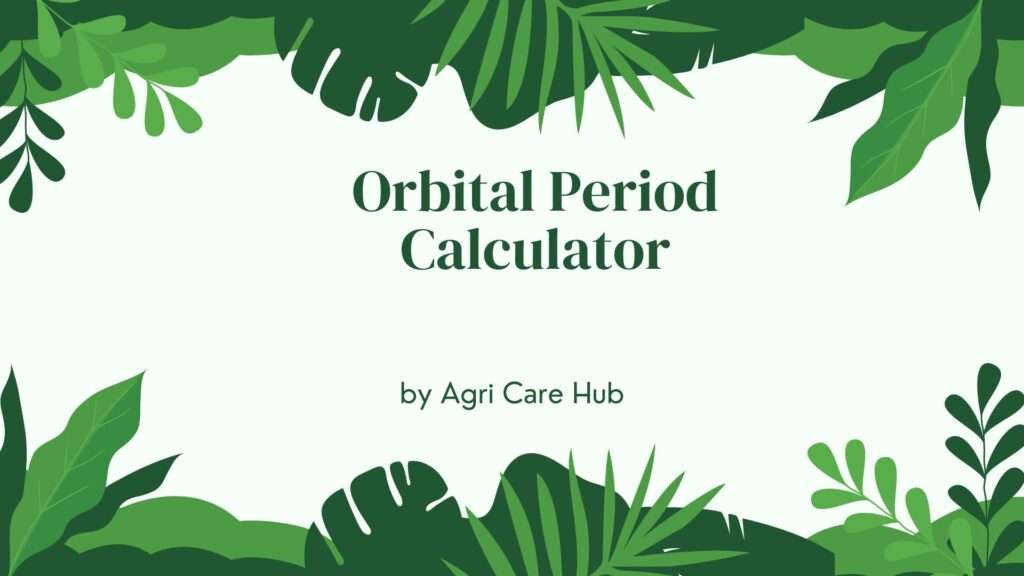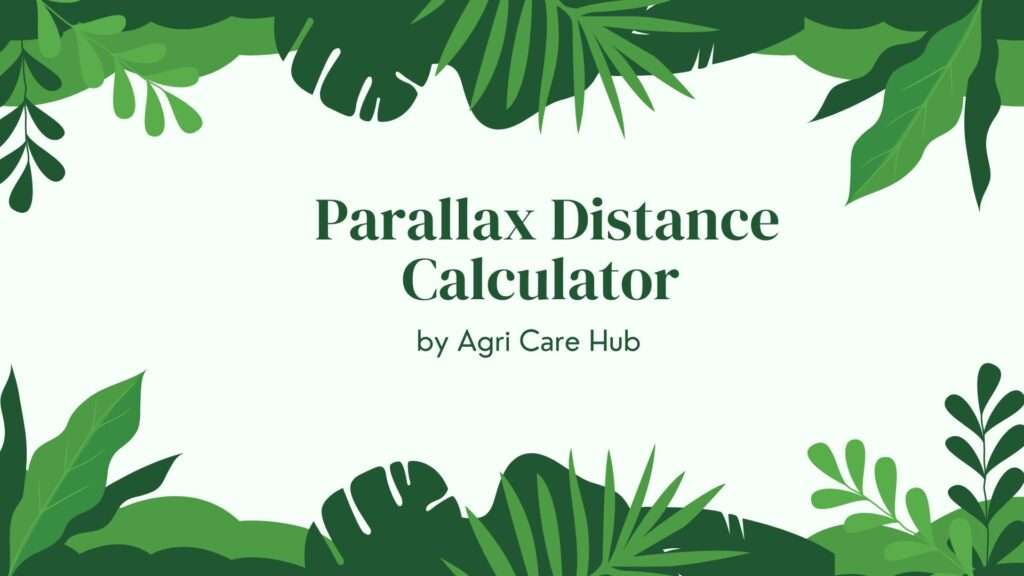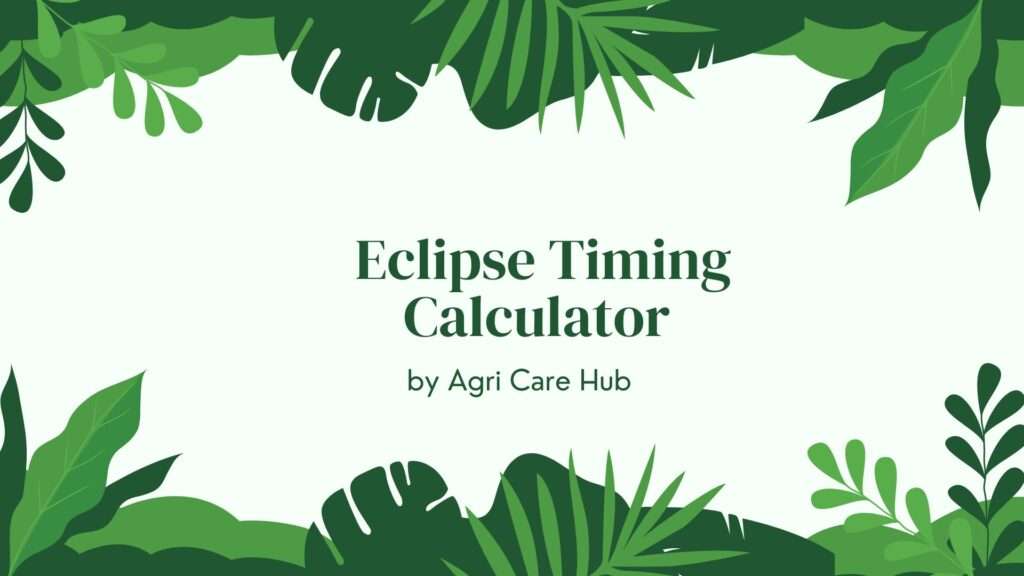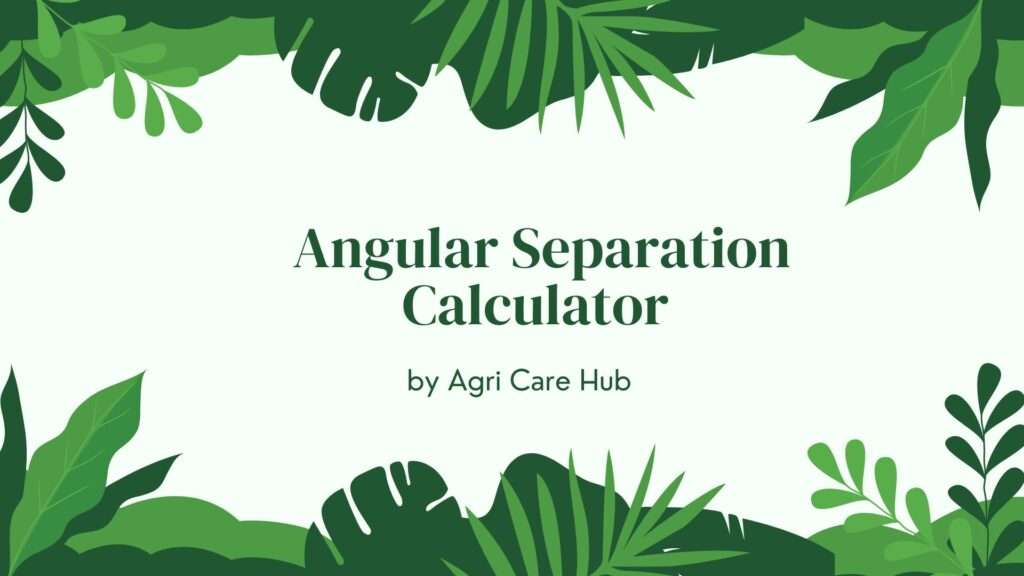Circular Orbit Calculator
About the Circular Orbit Calculator
The Circular Orbit Calculator is a powerful tool designed to compute the orbital velocity and period for satellites or objects in a circular orbit around a celestial body. Whether you're a student, researcher, or space enthusiast, this tool provides accurate results based on established scientific principles. By inputting the mass of the central body and the orbital radius, you can instantly calculate key orbital parameters. For convenience, the tool includes preset values for celestial bodies like Earth, Moon, and Mars, making it user-friendly and accessible.
This calculator is grounded in Newtonian gravitation, specifically using the formulas for Circular Orbit dynamics. It is an essential resource for understanding satellite motion, space mission planning, or educational purposes. For additional agricultural tools and resources, visit Agri Care Hub.
Importance of the Circular Orbit Calculator
Understanding orbital mechanics is critical in the modern era, especially with the increasing number of satellites launched for communication, weather monitoring, and scientific research. The Circular Orbit Calculator simplifies complex calculations, making them accessible to users without advanced mathematical backgrounds. It ensures precision by relying on verified formulas, such as the orbital velocity equation \( v = \sqrt{\frac{GM}{r}} \), where \( G \) is the gravitational constant, \( M \) is the mass of the central body, and \( r \) is the orbital radius. The tool also calculates the orbital period, which is the time taken for one complete orbit, using \( T = 2\pi \sqrt{\frac{r^3}{GM}} \).
This tool is particularly valuable for educators teaching physics or astronomy, students learning about orbital dynamics, and professionals in the aerospace industry. It bridges the gap between theoretical science and practical application, providing a reliable way to verify calculations for real-world scenarios, such as satellite deployment or space station maintenance.
User Guidelines
To use the Circular Orbit Calculator effectively, follow these steps:
- Input the Mass: Enter the mass of the central body in kilograms. For example, Earth’s mass is approximately 5.972 × 10²⁴ kg. You can select a preset celestial body (Earth, Moon, Mars) to auto-fill the mass.
- Enter the Orbital Radius: Provide the distance from the center of the celestial body to the orbiting object in meters. For instance, a low Earth orbit might be around 6.792 × 10⁶ meters (Earth’s radius plus altitude).
- Calculate: Click the “Calculate” button to obtain the orbital velocity (in meters per second) and orbital period (in seconds).
- Interpret Results: The results will display the velocity required to maintain a circular orbit and the time for one complete orbit. Use these values for your analysis or planning.
Note: Ensure inputs are in the correct units (kilograms for mass, meters for radius) to avoid errors. The calculator assumes a perfectly circular orbit and does not account for atmospheric drag or other perturbations.
When and Why You Should Use the Circular Orbit Calculator
The Circular Orbit Calculator is ideal for various scenarios:
- Educational Purposes: Students studying physics, astronomy, or aerospace engineering can use the tool to verify calculations or explore orbital mechanics concepts.
- Space Mission Planning: Professionals designing satellite trajectories or space missions can use the calculator to estimate velocity and period for specific orbits.
- Amateur Astronomy: Space enthusiasts can experiment with different celestial bodies and orbital radii to understand how orbits work.
- Research and Development: Researchers analyzing satellite data or orbital dynamics can use the tool for quick, accurate calculations.
Using this tool ensures that your calculations are based on authentic scientific formulas, reducing the risk of errors in critical applications. It saves time and eliminates the need for manual computations, making it an efficient choice for both beginners and experts.
Purpose of the Circular Orbit Calculator
The primary purpose of the Circular Orbit Calculator is to provide a user-friendly, scientifically accurate tool for calculating key parameters of circular orbits. It serves as an educational and practical resource, enabling users to understand and apply orbital mechanics without needing extensive mathematical expertise. By automating complex calculations, the tool empowers users to focus on analysis and application rather than manual computation.
The calculator also promotes accessibility in science education. By including preset values for common celestial bodies, it reduces barriers for users who may not have immediate access to precise data, such as the mass of Mars or the Moon. Additionally, the tool’s design prioritizes good UX, with a clean interface, intuitive inputs, and clear results, ensuring that users of all levels can navigate it easily.
From a broader perspective, the Circular Orbit Calculator contributes to the growing interest in space exploration and technology. As humanity expands its presence in space, tools like this become essential for fostering innovation, education, and collaboration. Whether you’re planning a satellite launch, teaching a physics class, or simply curious about how objects move in space, this calculator provides reliable, actionable insights.
Scientific Basis of the Calculator
The Circular Orbit Calculator is built on well-established principles of Newtonian gravitation. The key formulas used are:
- Orbital Velocity: \( v = \sqrt{\frac{GM}{r}} \), where \( G \) is the gravitational constant (6.67430 × 10⁻¹¹ m³ kg⁻¹ s⁻²), \( M \) is the mass of the central body, and \( r \) is the orbital radius.
- Orbital Period: \( T = 2\pi \sqrt{\frac{r^3}{GM}} \), which calculates the time for one complete orbit.
These formulas are derived from Newton’s law of universal gravitation and the centripetal force required for circular motion. They are widely accepted in the scientific community and used in real-world applications, such as satellite orbit design and space mission planning. The calculator ensures precision by using the exact value of the gravitational constant and allowing users to input precise masses and radii.
For additional reliability, the tool includes preset values for celestial bodies based on data from reputable sources, such as NASA and other peer-reviewed astronomical databases. This ensures that calculations for common scenarios, like Earth or Mars orbits, are accurate and consistent with scientific standards.
Applications in Agriculture and Beyond
While the Circular Orbit Calculator is primarily designed for space-related calculations, its principles can indirectly benefit fields like agriculture. For example, satellites in circular orbits are used for precision agriculture, providing data on crop health, soil moisture, and weather patterns. Tools like those offered by Agri Care Hub leverage satellite data to optimize farming practices, demonstrating the interdisciplinary value of orbital mechanics. By understanding satellite orbits, farmers and researchers can better utilize space-based technologies to improve crop yields and sustainability.
In summary, the Circular Orbit Calculator is a versatile, scientifically grounded tool that serves educators, students, professionals, and enthusiasts alike. Its intuitive design, accurate calculations, and comprehensive documentation make it an essential resource for anyone interested in orbital mechanics or space exploration.


